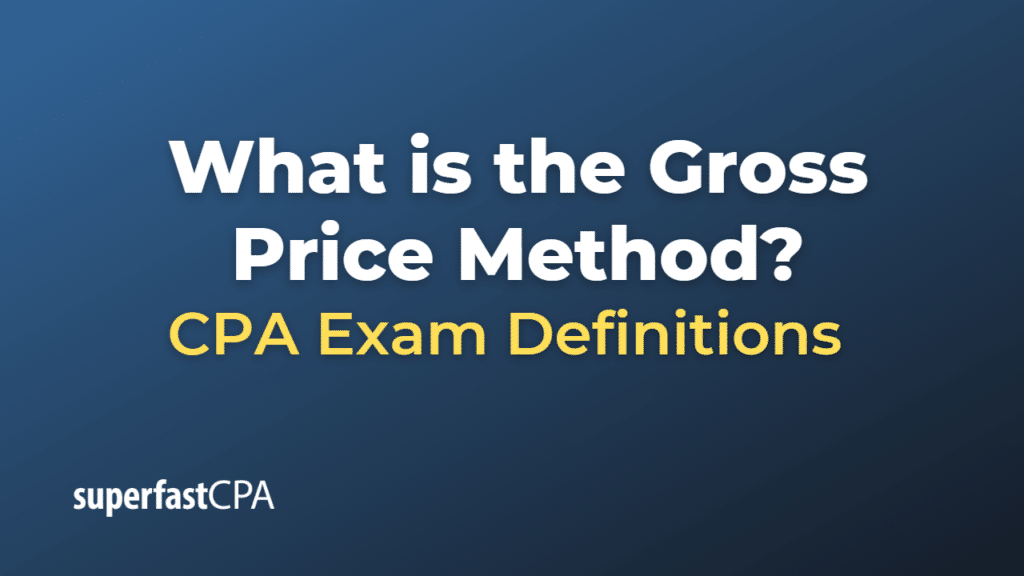Gross Price Method
The Gross Price Method, also known as the gross method, is an accounting approach used to record purchases and sales of inventory.
Under the gross price method, purchases are recorded at their full invoice price, and any discounts offered by the supplier for early payment (known as purchase discounts or sales discounts) are recorded only when they are taken.
For example, if a supplier offers terms of “2/10, net 30”, it means the buyer will get a 2% discount if they pay within 10 days. If the buyer does not take advantage of the discount and pays later, no discount is recorded in the accounting records.
Similarly, sales made to customers are recorded at their full invoice price, and any discounts for early payment are recorded only when the customer takes the discount.
The alternative to the gross price method is the net price method, which assumes that all available discounts will be taken and records the transactions at their net amount from the beginning.
The choice between the gross price method and net price method can affect the value of the inventory and cost of goods sold reported on the financial statements, as well as the timing of recognizing purchase or sales discounts in the income statement. However, the total profit reported over time will be the same under both methods as long as the physical flow of goods and the actual payment terms are the same.
Example of the Gross Price Method
Imagine that a business, “Gadget Store”, purchases 100 units of a product for $10 each. The supplier offers terms of 2/10, net 30. This means the supplier is offering a 2% discount if the invoice is paid within 10 days; otherwise, the full amount is due in 30 days.
Step 1: Record the Purchase
Under the gross price method, Gadget Store would first record the full cost of the purchase, without considering the potential discount:
Debit (Increase) Inventory: $1,000 (100 units x $10/unit) Credit (Increase) Accounts Payable: $1,000
Step 2: Record the Payment
Now, let’s assume Gadget Store pays the invoice within 10 days to take advantage of the discount. The discount is 2% of the $1,000 invoice, or $20. Here’s how Gadget Store would record the payment and the discount:
Debit (Decrease) Accounts Payable: $1,000 Credit (Decrease) Inventory: $20 (for the discount taken) Credit (Decrease) Cash: $980 (the actual cash paid, $1,000 – $20 discount)
Under the gross price method, the purchase discount is only recorded when it is actually taken by making an early payment. If Gadget Store did not pay within the 10-day discount period, the full $1,000 would be paid, and no discount would be recorded.
It’s important to note that the gross price method can slightly inflate the initially reported inventory and accounts payable figures since it doesn’t assume discounts will be taken. In contrast, the net price method would assume from the beginning that all discounts will be taken.













